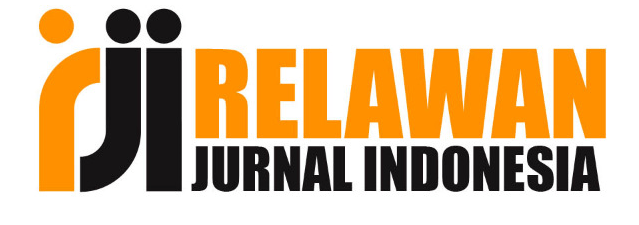PENYULUHAN KESEHATAN PENYAKIT HIV/AIDS , KONDISI DAN TATA LAKSANA
Abstract
HEALTH EDUCATION ON HIV/AIDS , CONDITIONS AND PROCEDURE
Siti Novy Romlah*1, Junaida Rahmi2, Nurun Nabila3, Syevira Alvionita4,
Stevani Angelina5.
STIKes Widya Dharma Husada Tangerang, Jl. Pajajaran Raya No. 1 Pamulang, Tangerang Selatan, 15417, Indonesia
Corresponding author: sitinovyromlah@wdh.ac.id
ABSTRACT
Human Immunodeficiency Virus (HIV) is an infection that attacks the immune system, specifically white blood cells called CD4 cells. HIV destroys these CD4 cells, weakening a person's immunity to opportunistic infections, such as tuberculosis and fungal infections, severe bacterial infections and some types of cancer. At diagnosis or immediately after starting ART, CD4 cell counts should be checked to assess a person's immune status. CD4 cell count is a blood test used to assess HIV disease progression, including the risk of developing opportunistic infections and guide the use of preventive treatment. The normal range for CD4 cell counts is from 500 to 1500 cells/mm3 of blood, and it progressively decreases over time in people who are not receiving or not responding well to ART. If the person's CD4 count drops below 200, their immunity is severely compromised, leaving them vulnerable to infection and death. A person with a CD4 cell count below 200 cells/mm 3 is described as having advanced HIV disease (AHD). People at high risk of contracting HIV should seek comprehensive and effective HIV prevention, testing and treatment services. HIV infection can be diagnosed using simple and affordable rapid diagnostic tests, as well as self-tests. It is important that HIV testing services follow the 5Cs: consent, confidentiality, counselling, correct results and relationship to treatment and other services.
Keywords: HIV, AIDS, Infectious Diseases
PENYULUHAN KESEHATAN PENYAKIT HIV/AIDS , KONDISI DAN
TATA LAKSANA
ABSTRAK
Human Immunodeficiency Virus (HIV) adalah infeksi yang menyerang sistem kekebalan tubuh, khususnya sel darah putih yang disebut sel CD4. HIV menghancurkan sel CD4 ini, melemahkan kekebalan seseorang terhadap infeksi oportunistik, seperti tuberkulosis dan infeksi jamur, infeksi bakteri parah dan beberapa jenis kanker. Saat diagnosis atau segera setelah memulai ART, jumlah CD4 harus diperiksa untuk menilai status kekebalan seseorang. Jumlah CD4 adalah tes darah yang digunakan untuk menilai perkembangan penyakit HIV, termasuk risiko berkembangnya infeksi oportunistik dan memandu penggunaan pengobatan pencegahan. Kisaran normal untuk jumlah CD4 adalah dari 500 hingga 1500 sel/mm3 darah, dan secara progresif menurun dari waktu ke waktu pada orang yang tidak menerima atau tidak merespons ART dengan baik. Jika jumlah CD4 orang tersebut turun di bawah 200, kekebalan mereka sangat terganggu, membuat mereka rentan terhadap infeksi dan kematian. Seseorang dengan jumlah CD4 di bawah 200 digambarkan memiliki penyakit HIV lanjut (AHD). Orang yang berisiko tinggi tertular HIV harus mencari layanan pencegahan, tes dan pengobatan HIV yang komprehensif dan efektif. Infeksi HIV dapat didiagnosis dengan menggunakan tes diagnostik cepat yang sederhana dan terjangkau, serta tes mandiri. Penting bahwa layanan tes HIV mengikuti 5C: persetujuan, kerahasiaan, konseling, hasil yang benar dan hubungan dengan pengobatan dan layanan lainnya.
Kata Kunci : HIV, AIDS, Penyakit Menular
Keywords
Full Text:
PDFReferences
Alvin. 2021. Jenis Tes HIV/AIDS. Jakarta Pusat. Spiritia Yayasan
World Health Organization. Pengertian HIV/AIDS. 2014
Yetik Marlinda, Muhammad Azinar. 2018. HIV/AIDS pencegahan. Semarang. Universitas Negeri Semarang
DOI: http://dx.doi.org/10.52031/jam.v3i1.301
Refbacks
- There are currently no refbacks.




